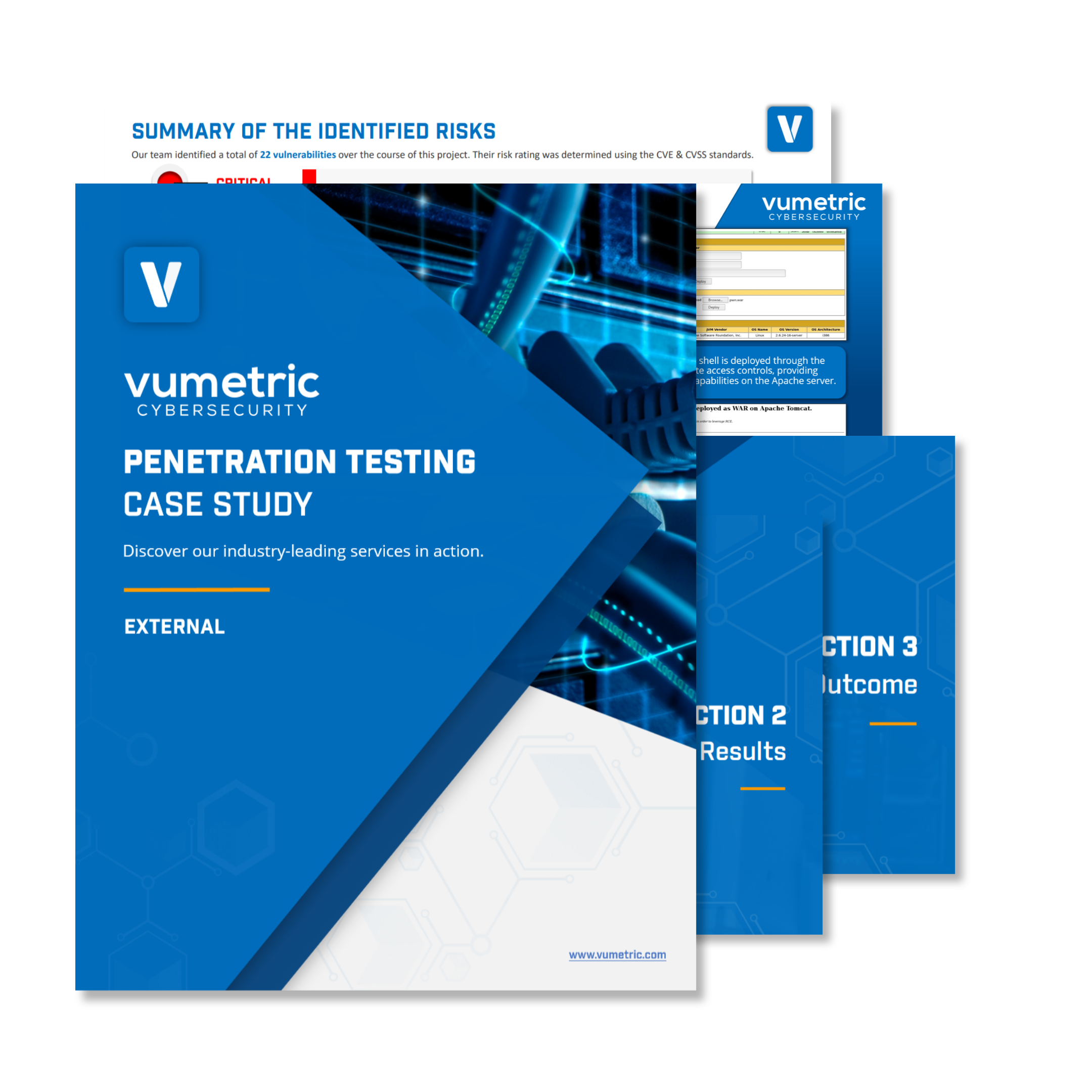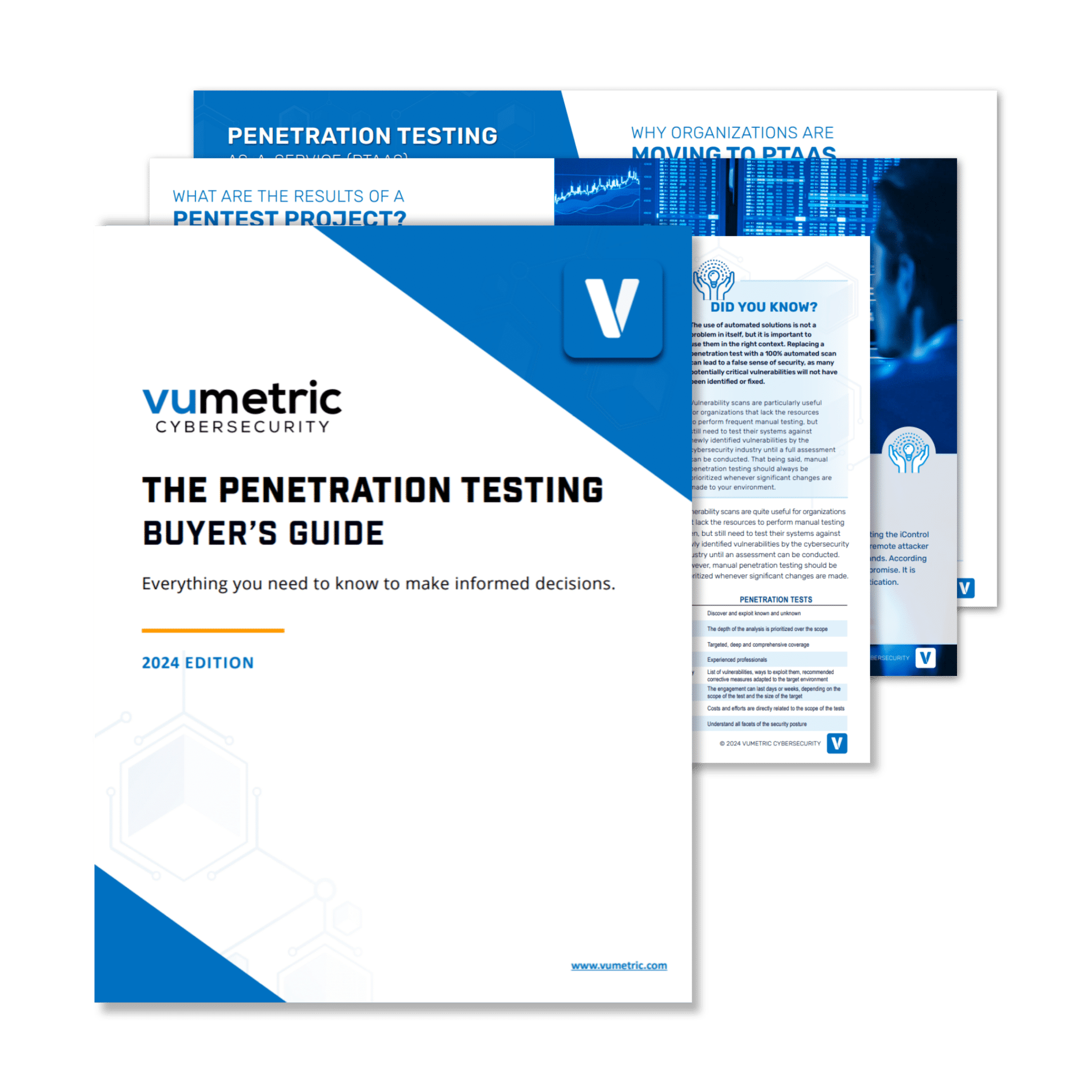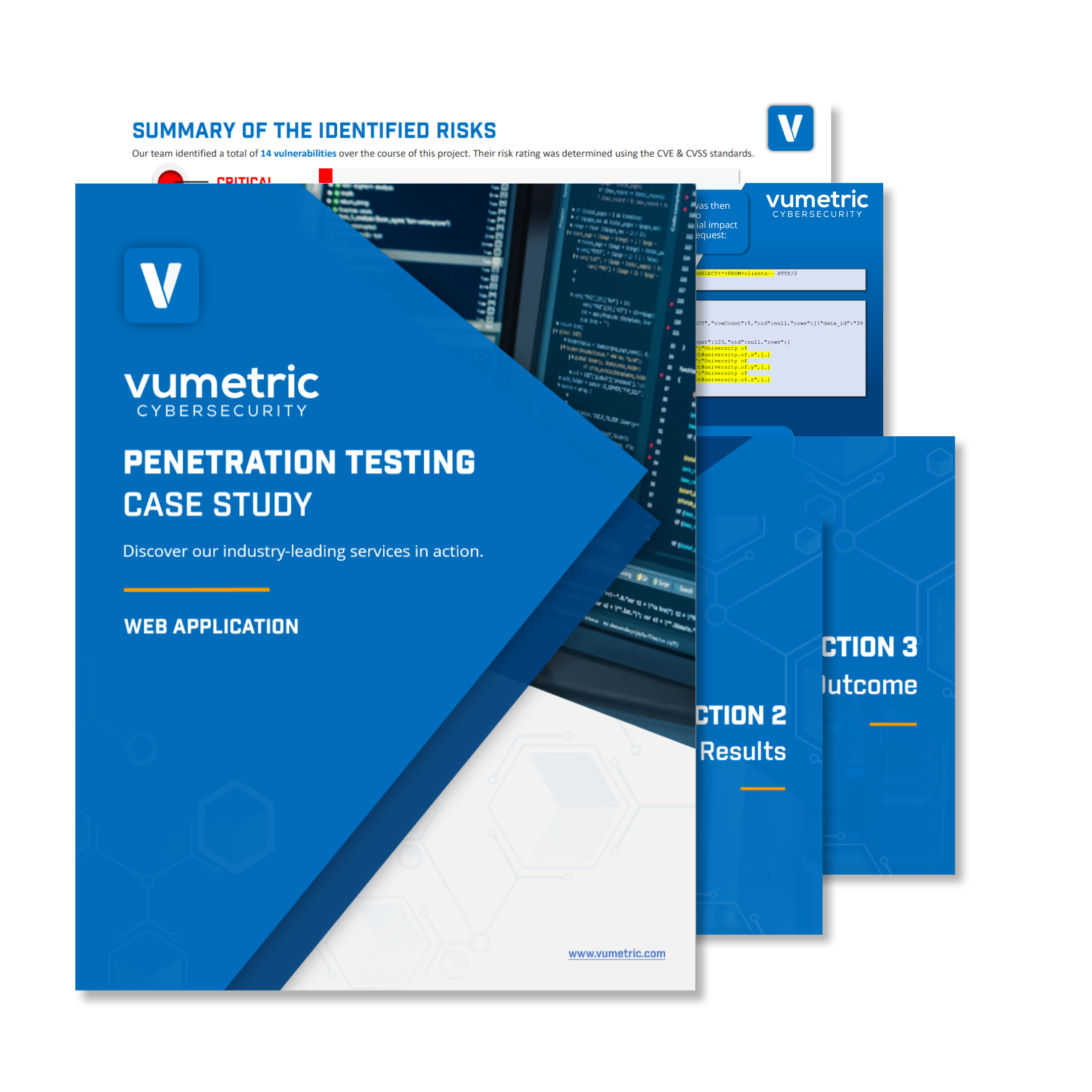If you’re like most organizations, you may be wondering if a penetration test or pentest is enough to find all the vulnerabilities in your systems. The good news is that there are ways to get the most value from your penetration test and minimize the risk of something slipping through the cracks. Here are 7 tips to help you get the most value from your pentest, from defining your business objectives and narrowing down your scope to selecting a qualified pentester.
1. Get management buy-in
Penetration testing is an authorized simulation of a cyberattack on a company’s technologies.
Getting executive buy-in from the get-go, especially if this is your first penetration test, is key to ensuring the process goes smoothly. Not only will this help you secure the budget for a quality penetration test, but it will also help you set expectations for what the test will entail and generate as a value driver.
Making your security program driven by business goals, with regular communication and security roles clearly defined, will help you win strong management buy-in.
2. Define your business objectives
A penetration test isn’t a one-size-fits-all solution, so it’s important to define your business objectives upfront. What are you trying to achieve with the test? Are you looking for a comprehensive assessment of your system’s security posture or do you have specific concerns that you want to be addressed? Are you doing a penetration test as part of a larger security or compliance initiative, like implementing a new security program? Defining key clear business goals are essential.
3. Narrow down your testing scope
When it comes to penetration test, more is not always better. In fact, in many cases, narrowing down the scope of testing can lead to more actionable results. By focusing on specific systems or assets, you can direct the penetration tester’s efforts to areas that are most important to your organization.
Things to consider when narrowing down your scope include the following:
- What are the most business-critical assets of your organization?
- What systems or data would cause the most damage if they were compromised?
- What are your specific testing objectives?
For example, your project could aim to improve your network security, application security, or cloud security.
External Penetration Testing
Case Study
See our industry-leading services in action and discover how they can help secure your external network perimeter from modern cyber threats and exploits.
Penetration Testing Guide
(2024 Edition)
Everything you need to know to scope, plan and execute successful pentest projects aligned with your risk management strategies and business objectives.
Web Application Penetration Testing
Case Study
See our industry-leading services in action and discover how they can help secure your mission-critical Web Apps / APIs from modern cyber threats and exploits.
Internal Penetration Testing
Case Study
See our industry-leading services in action and discover how they can help secure your internal network infrastructure from modern cyber threats and unauthorized access.
4. Select a qualified penetration testing provider
Not all penetration testers are created equal. When selecting a provider, it’s important to look for a qualified and experienced pentesting firm. Ideally, you will want an ISO-certified global pentesting or cybersecurity provider, with professionals holding real-world extensive experience and the most recognized certifications in the industry.
Our Top 8 Penetration Testing Certifications Your Provider Should Hold article will tell you which top pentesting or cybersecurity certifications to watch for, from GXPN and CEH to GPEN and OSCP.
In addition, the pentesting firm should have a robust engagement process that includes pre-testing questionnaires, notification of critical vulnerabilities during testing, and delivery of final reports with executive summaries and remediation guidance. Some of your other selection criteria could include the following:
- Do they have experience in your industry?
Certain compliance mandates such as PCI-DSS or HIPAA might be unique to your organization and it would be helpful to have a pentester that is already familiar with these requirements.
- Do they use an automated testing tool or rely solely on manual testing?
In general, you want to avoid a provider that relies solely on automated testing tools. While these tools can help identify low-hanging fruits, they are not always effective in detecting more sophisticated vulnerabilities. A good pentester will use a combination of both manual and automated testing methods.
- How many penetration test projects have they delivered?
This question can help you gauge the provider’s experience and expertise. Is the firm specializing in penetration testing or is it just a small part of their business? Having the number of projects delivered will give you confidence that the provider knows what they are doing.
- Are they selling or reselling software solutions as part of their offering?
A penetration testing provider’s focus should be on identifying vulnerabilities and providing recommendations on how to remediate them. If they are selling or reselling software solutions as part of their offering, it might hamper your ability to get an objective assessment of your system’s security posture.
- Are the tests performed in-house or being outsourced?
In-house testing can be more expensive, but it also allows for better communication and coordination between the pentester and your team. If the provider outsources their tests, they might not have as much control over the quality or timeliness of the results.
Some other provider-related questions are worth asking, namely the ones about testing methodologies, the report’s table of contents, or vulnerability remediation assistance, if any, as featured in our other blog post titled, 6 Questions to Help Pick Your Penetration Testing Provider. Speaking of table of contents, our other blog post 5 Items You Should Find in a Penetration Testing Report shall give you the specifics of a great professional penetration testing report.
5. Harden your systems
Before you even think about scheduling a pentest, it’s important to already make your systems as secure as they can be. This process is known as system hardening, and it involves taking steps to reduce the attack surface of your systems and making them more resilient to attacks.
System hardening can be a time-consuming and complex process, but there are some basic steps you can take to get started, such as the following:
- Disabling unnecessary services and accounts.
- Ensuring that all software is up to date.
- Creating strong passwords and enabling two-factor authentication.
- Restricting access to critical systems and data.
6. Plan for remediation
Once you get your penetration test report, you will want to take action to remediate the identified vulnerabilities as quickly as possible. That’s where having a plan for remediation and re-testing comes in. Your plan could include the following:
- Prioritizing vulnerabilities based on severity.
- Assigning responsibility for each vulnerability.
- Creating a timeline for remediation.
- Scheduling re-tests to confirm that the vulnerabilities have been fixed.
A plan for remediation and re-testing will not only help you track your progress and show your stakeholders the value of the pentest, but also help make sure that critical vulnerabilities are fixed promptly.
7. Set a test frequency
A penetration test won’t generate the value you’re expecting nor keep your systems fully secure without ongoing monitoring. Penetration tests should be conducted regularly, typically once or twice a year, to ensure that new vulnerabilities are identified and remediated promptly.
The frequency of your tests will also depend on various factors, such as the rate of change in your systems, the evolution of the threat landscape, and the compliance requirements you need to meet. The most value-generating approach is to integrate penetration testing into your organization’s overall security program.
When it comes to emerging threats, our other blog post, The Main Cyber Risks Threatening Organizations in 2022, will help you determine the best re-testing frequency to keep your organization secure.
An annual comprehensive test of your system will allow you to compare with the previous year’s results, thus measuring your organization’s improvement in cybersecurity year over year and fine-tuning your security program. In addition, sporadic smaller-scale tests of specific areas of your systems can be a great way to further improve your security posture.
Wrapping up
There are other tips for getting the most value from your penetration test, such as learning what the pentesters are doing, understanding the limitations of penetration testing, or involving all key stakeholders early on. But following the tips above will not only help align your penetration with your organization’s specific needs, but also making your critical assets more secure.
Contact us if you need help with your external penetration testing project.








